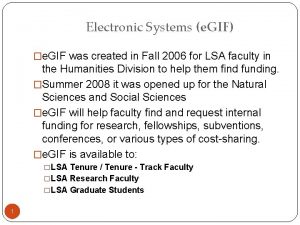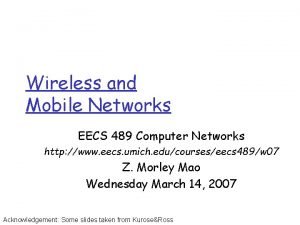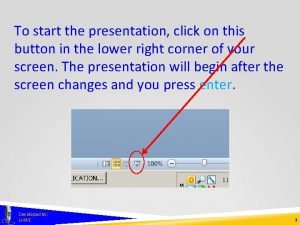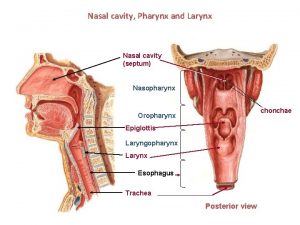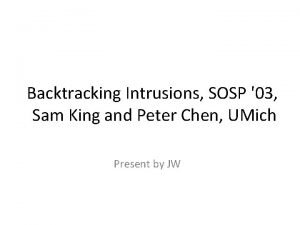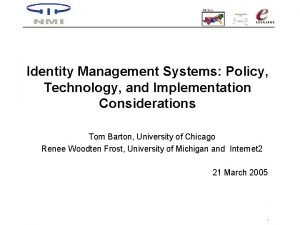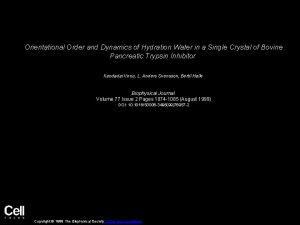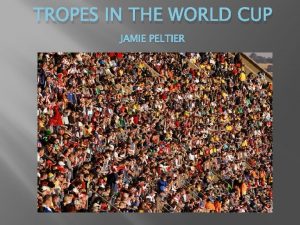Last Lecture http www umich edupsycours345 Orientational Terminology











- Slides: 11

Last Lecture http: //www. umich. edu/~psycours/345/ Orientational Terminology Gross Neuroanatomy Cytoarchitecture

Today’s Lecture Cytoarchitectonic and projections maps Plasticity of maps- Phantom limbs Perimetry- measuring deficits of visual sensation Organization of the Visual System Intro to Blindsight

Cytoarchitecture Gray matter is 2 mm thick. 6 layers differing in connections & size, density of cell types. 2 & 4 : receiving layers 3, 5 & 6: sending layers fibers from sensory and association cortex thicker in sensory cortex 3 - association cortex and commissures 5 - brainstem and spinal cord 6 - thalamus thicker in motor cortex Thalamocortical, corticothalamic & Corticocortical connections (intra and interhemispheric)

Cytoarchitectonic Maps: Complex micro-structure of neural tissue Brodmann's (1909) Map Classified regions based on cell layers Identified 52 areas Structural classification --> functional differences system widely used to refer to areas of interest.

Projection Maps defined by their input What gets mapped depends on the sensory modality vision-- visual space auditory-- pitch (frequency) touch-- body surface

Properties of Cortical Organization Hierarchical Organization ranking based on modality specificity & complexity of functions Contralateral Organization Left Hemisphere represents: Right Visual Field Right side of body Right Ear Input Vice versa for Right Hemisph. Functional Segregation “modules” with specialized functions Generic (simplified) Pathway: SENSORY RECEPTOR THALAMIC NUCLEUS PRIMARY CORTEX SECONDARY CORTEX ASSOCIATION CORTEX

The Body is Mapped onto the Brain

A Closer Look at a Projection Map: Stimulation studies of Penfield The Sensory Homunculus: body surface mapped onto cortical surface (AREA 3) Important Principles: the map is orderly somatotopic organization: adjacent body regions are adjacent on the cortex amount of dedicated cortex reflects sensitivity of the body surface Motor Homonculus mapped onto Area 4

Experience/Nurture can alter the maps Surgical manipulation of fingers leads to decreased resolution of sensory map.

Experience/Nurture can create phantom phenomena. . .

Cortical Reorganization Sensory input is missing for hand area. Cells in face area takeover hand area. Stimulation of face now activates hand area. This gives rise to sensation of a phantom hand. (V. Ramachandran)
 Egif umich
Egif umich 01:640:244 lecture notes - lecture 15: plat, idah, farad
01:640:244 lecture notes - lecture 15: plat, idah, farad Randy pausch the last lecture summary
Randy pausch the last lecture summary Http //siat.ung.ac.id atau http //pmb.ung.ac.id
Http //siat.ung.ac.id atau http //pmb.ung.ac.id Http //mbs.meb.gov.tr/ http //www.alantercihleri.com
Http //mbs.meb.gov.tr/ http //www.alantercihleri.com Eecs 489
Eecs 489 Umich qfrm
Umich qfrm Umich irbmed
Umich irbmed Trachea esophagus
Trachea esophagus Peter chen umich
Peter chen umich Identity management umich
Identity management umich Handshake umich
Handshake umich
